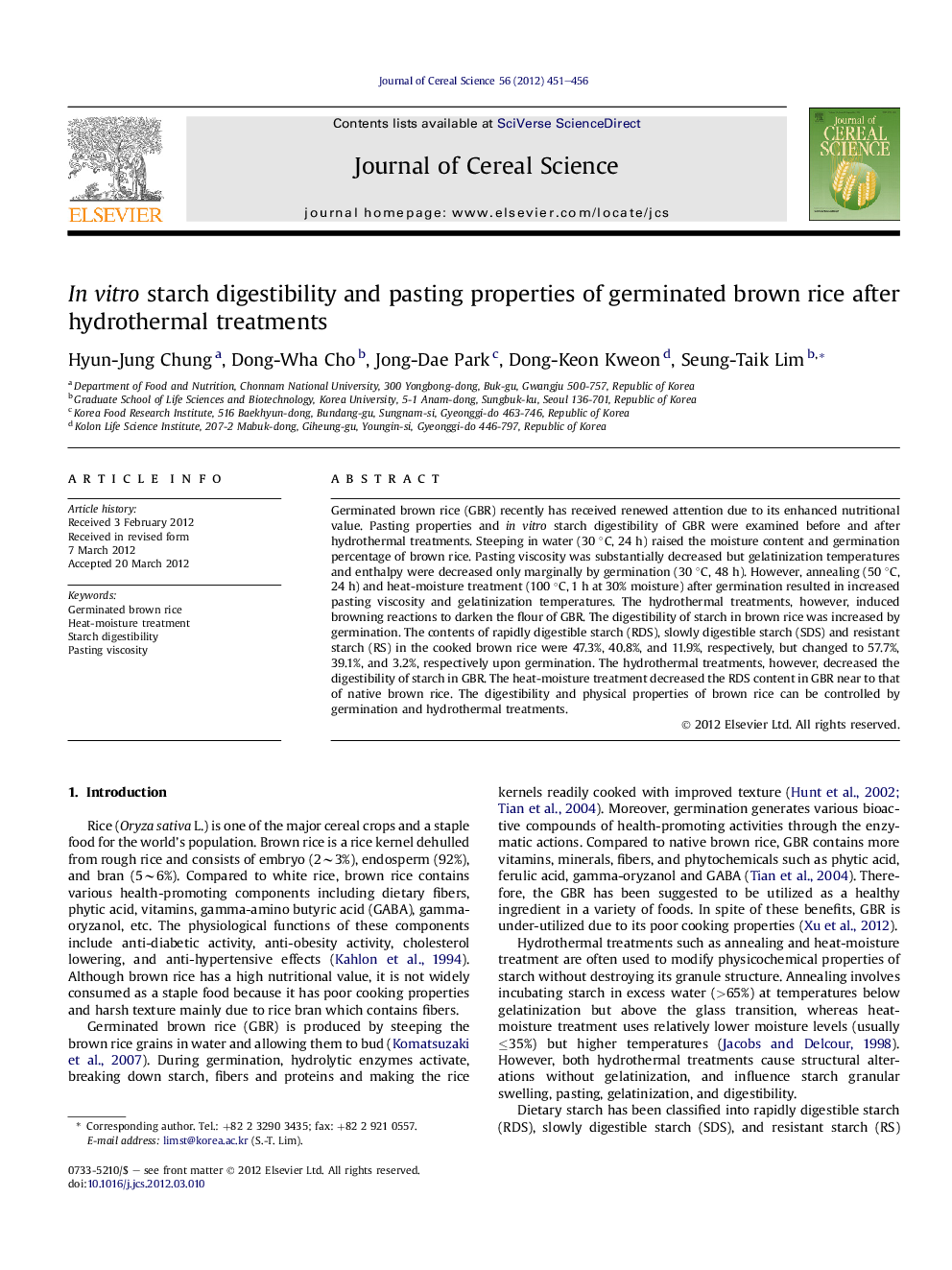| Article ID | Journal | Published Year | Pages | File Type |
|---|---|---|---|---|
| 6378149 | Journal of Cereal Science | 2012 | 6 Pages |
Germinated brown rice (GBR) recently has received renewed attention due to its enhanced nutritional value. Pasting properties and in vitro starch digestibility of GBR were examined before and after hydrothermal treatments. Steeping in water (30 °C, 24 h) raised the moisture content and germination percentage of brown rice. Pasting viscosity was substantially decreased but gelatinization temperatures and enthalpy were decreased only marginally by germination (30 °C, 48 h). However, annealing (50 °C, 24 h) and heat-moisture treatment (100 °C, 1 h at 30% moisture) after germination resulted in increased pasting viscosity and gelatinization temperatures. The hydrothermal treatments, however, induced browning reactions to darken the flour of GBR. The digestibility of starch in brown rice was increased by germination. The contents of rapidly digestible starch (RDS), slowly digestible starch (SDS) and resistant starch (RS) in the cooked brown rice were 47.3%, 40.8%, and 11.9%, respectively, but changed to 57.7%, 39.1%, and 3.2%, respectively upon germination. The hydrothermal treatments, however, decreased the digestibility of starch in GBR. The heat-moisture treatment decreased the RDS content in GBR near to that of native brown rice. The digestibility and physical properties of brown rice can be controlled by germination and hydrothermal treatments.
⺠The hydrothermal treatments commonly used for starch was applied to GBR. ⺠The changes in the in vitro starch digestibility and pasting properties of GBR were investigated. ⺠Pasting viscosity substantially decreased and digestibility of starch increased by germination. ⺠Hydrothermal treatments for GBR increased pasting viscosity and reduced starch digestibility.
